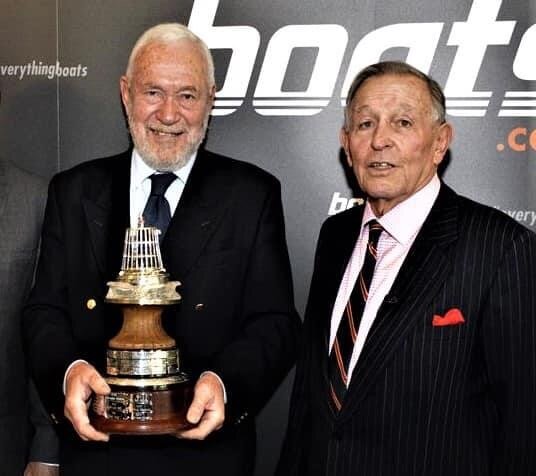There has never been anything like this finish. Eight boats finishing an 80 day solo, non-stop, race around the world in just over 24 hours. Who of us would have put a bet on that back in November?
Just think about it. In 1992 the target was for a voyage around the world inside 80 days, and many thought that a target too far. Well Bruno Peyron just achieved it in 1993, in a large trimaran and the next year we dropped it to just under 75 days. But these were large multihulls, not monohulls. OK, this Vendée fleet did not achieve their target of 70 days, but, as ever, the weather threw in interference. The passage through the South Atlantic on the way out became a nightmare of shifting weather systems, and it did the same on the way back. This inevitably slowed everyone down and the 70 day target slipped away.
Despite his damage, once redress was applied, Boris Herrmann moved into 5th place, (80 days, 14 hours 59 minutes and 45 seconds), just behind Jean Le Cam whose redress propelled him into 4th place with a time of 80 days, 13 hours 44 minutes and 55 seconds. I have no doubt that Jean Le Cam’s incredible rescue of fellow sailor Kevin Escoffier will bring him further deserved recognition. Just how close this race has been can be seen in how close Thomas Ruyant’s Linked Out came, 80 days, 15 hours, 22 minutes and 01 seconds, or just 22 minutes behind Boris Herrmann. Groupe-Apicil finished 7th with a time of 80 days, 21 hours, 58 minutes and 20 seconds, and Prysmian Groupe came in 8th in 80 days, 22 hours, 42 minutes and 20 seconds. Omia-Water Family should finish within the next hour.
I watched Boris Herrmann's video report. He obviously got badly caught by the fishing boat, ripping off his bowsprit, damaging his starboard masthead shroud, tearing his headsail which went into the water and damaging his starboard foil. He honestly stated that he was asleep, but he has a number of alarms which failed to alert him to the approach. His radar should have alerted him, and, as he rightly said, not all fishing boats have an AIS switched on and many do not keep a lookout. I was nearly run down by one, which, fortunately I saw, which sailed past me at about 3 yards distance with no one on the bridge or even on the deck. If I had not been keeping a lookout I would have been killed. So it is something we tell our watchkeepers when sailing anywhere, fishing boats might be operating, which is most of our coasts, keep alert and always use the eyeball Mark 1. The Southern Ocean maybe less dangerous than sailing into the Bay of Biscay!
After the collision, Boris was OK on port tack, except for his damaged starboard foil, but he carefully nursed his boat 85 miles to the finish line, and, because of his redress, his finish position is a very creditable 4th.
Pip Hare is across the equator and Miranda Merron is into the easterly trades on her way there.
So what have we learned from this 9th Vendee Globe race? Obviously, with 25 boats finished or still sailing having rounded Cape Horn out of the 33 starters, this is by far the best results ever. The designers, builders and sailors are getting things right. The fact that eight boats could finish within 24 hours speaks volumes about the reliability of the boats, their rigs, sails and electronics. It also says a great deal about the very high quality and standards of the sailors who undoubtedly pressed very hard. Yes there were failures, but from those failures lessons are learned which lead to improvements for all of us.
So thank you Vendée sailors and organisers, for a fantastic sporting event over the past 80 days.
This is my last blog on the Vendée. I can’t manage being up half the night watching the America’s Cup, which is excellently covered, and try and put a coherent blog together each morning!
OUT!
RKJ
